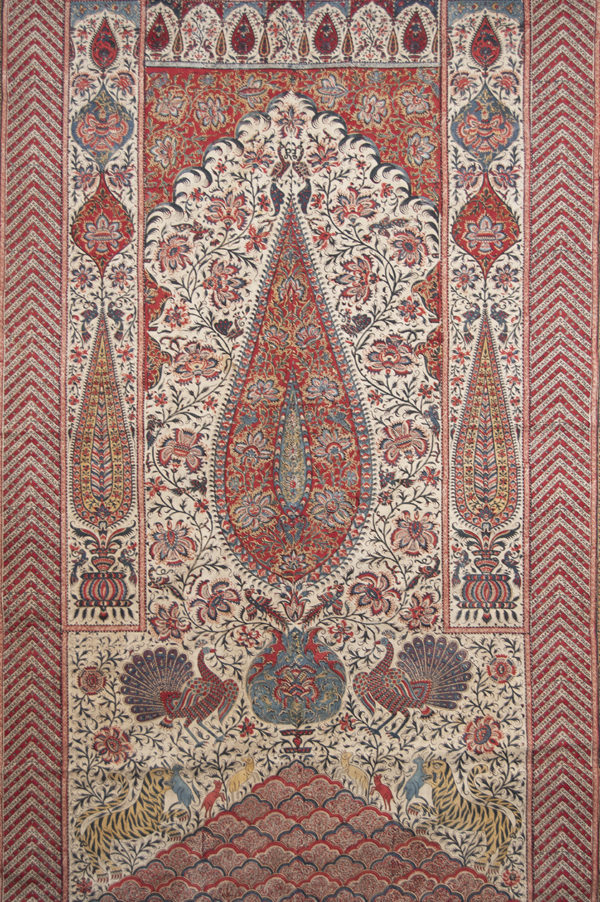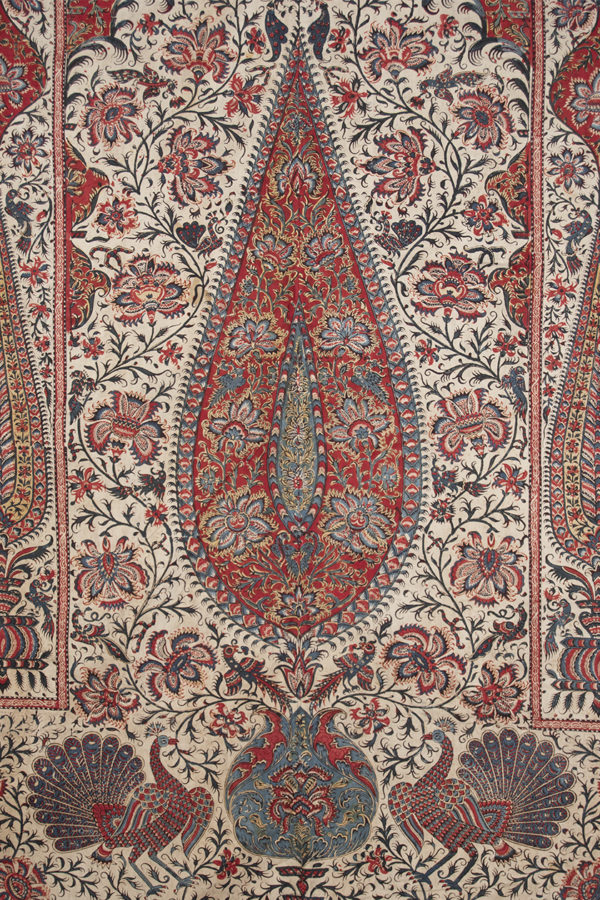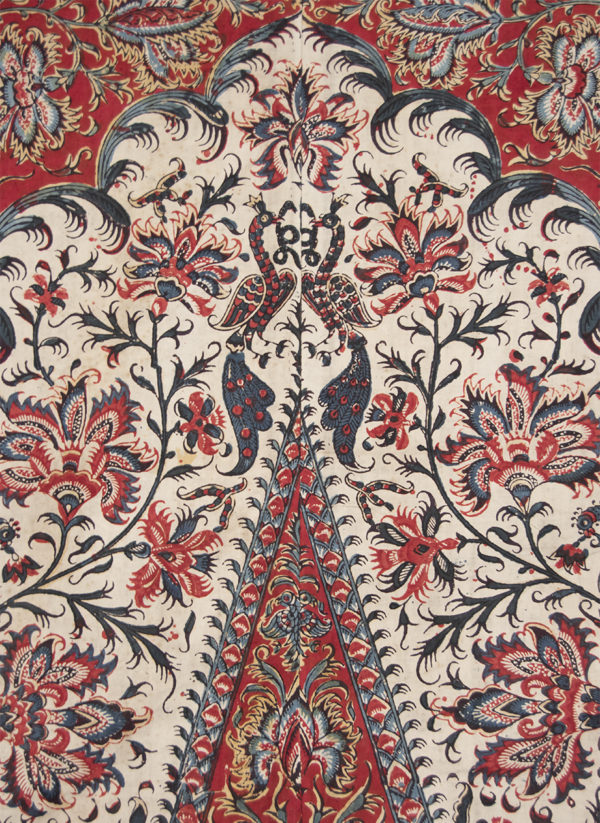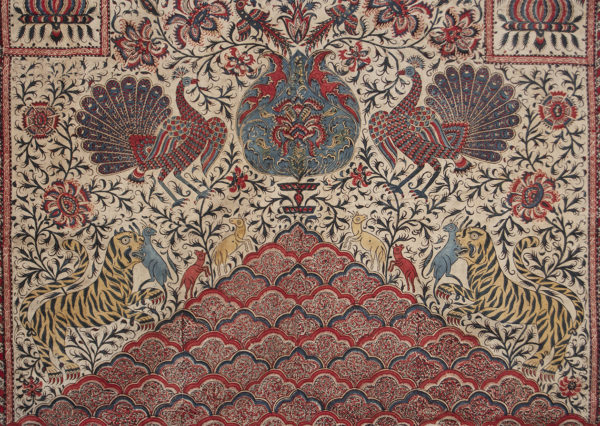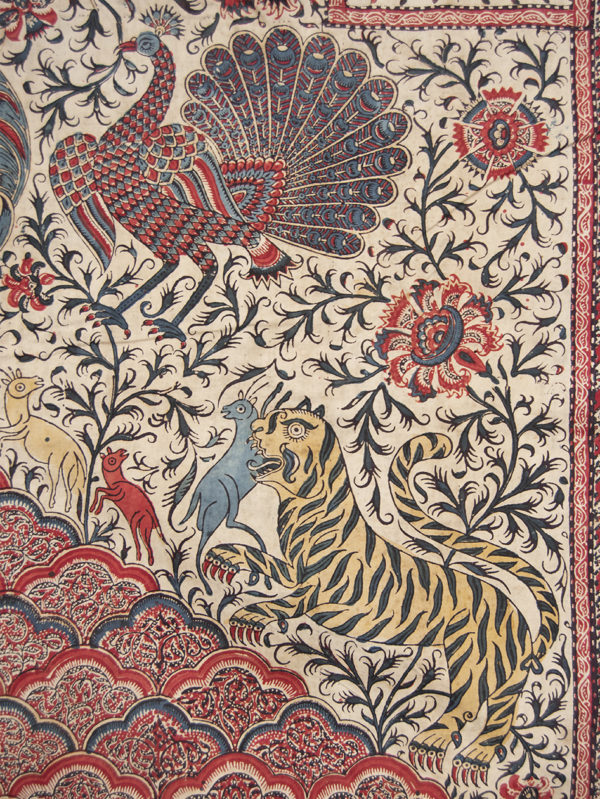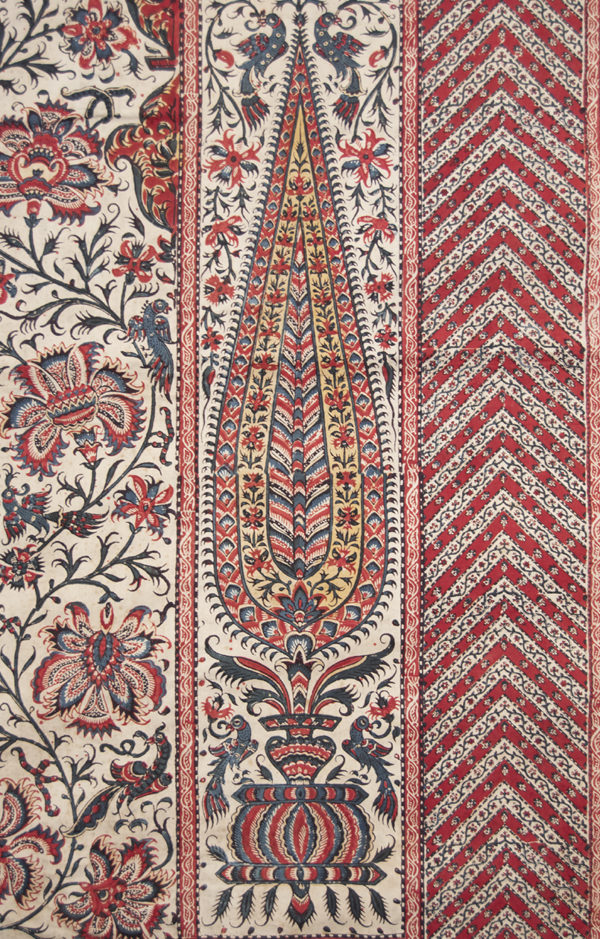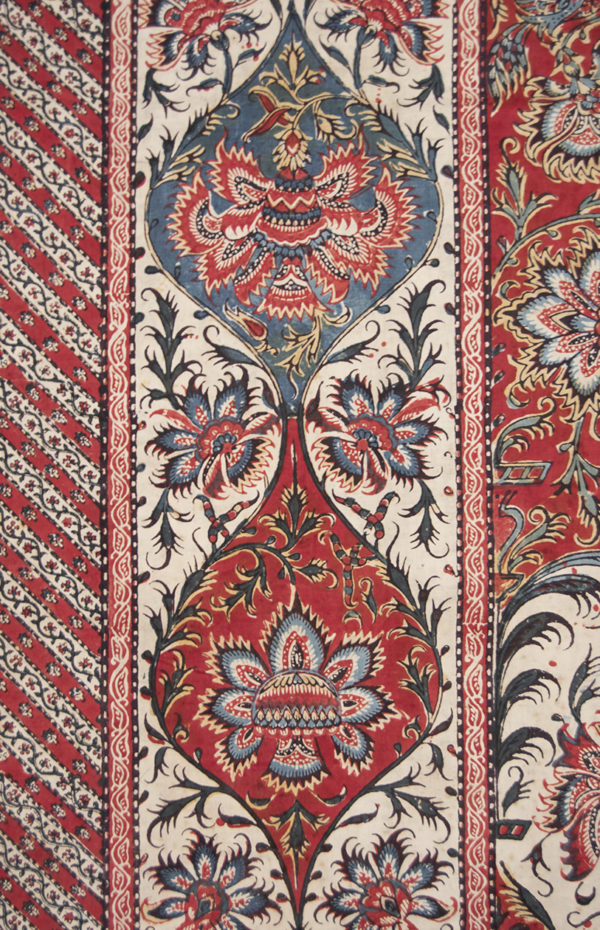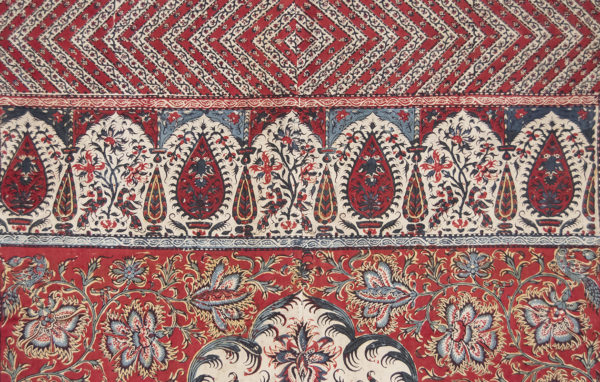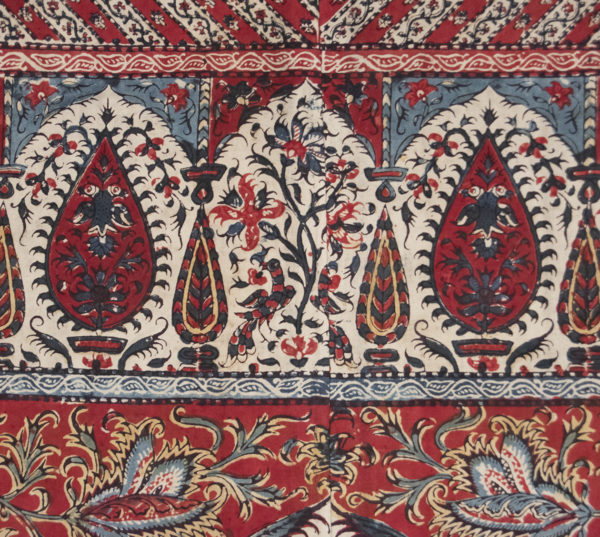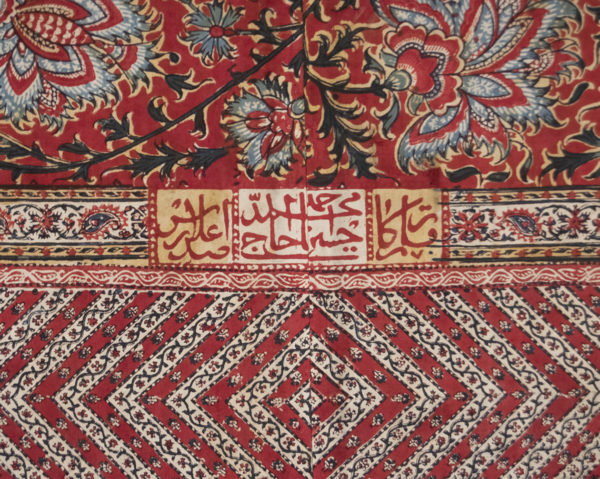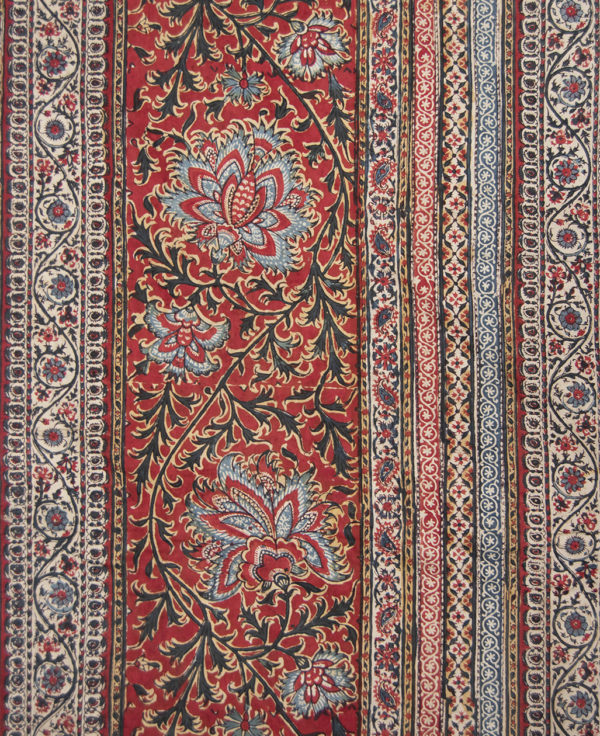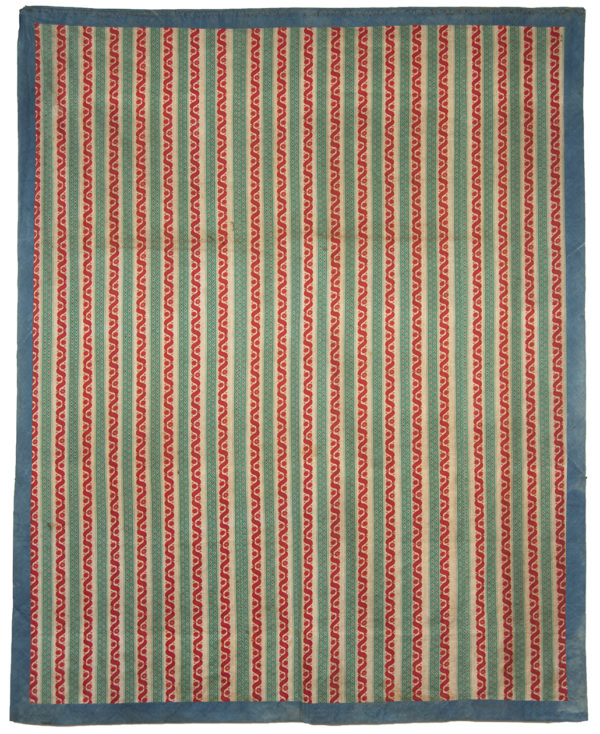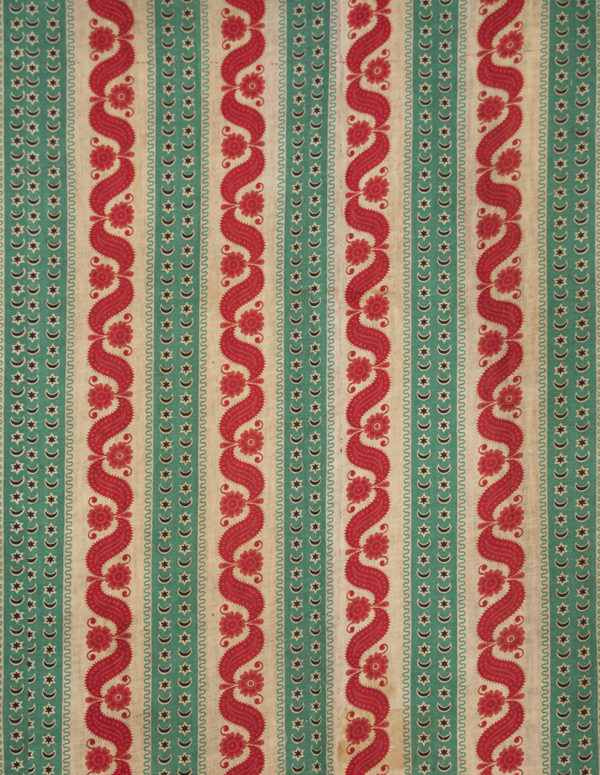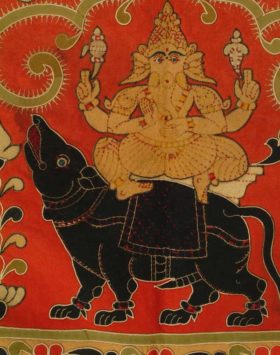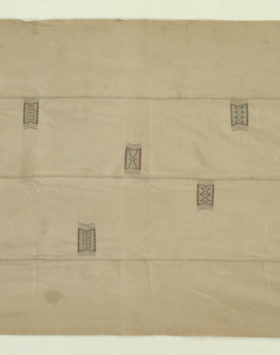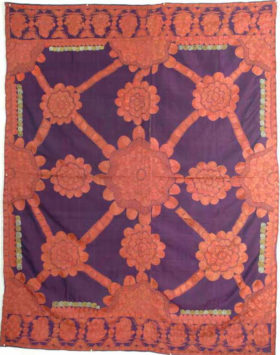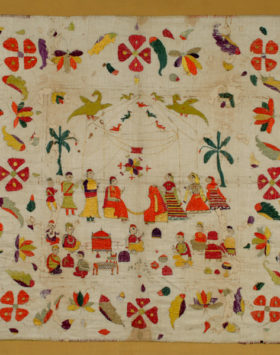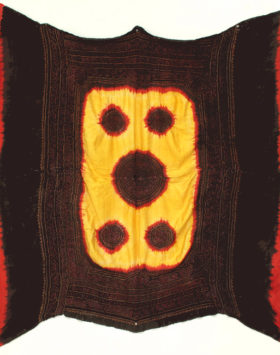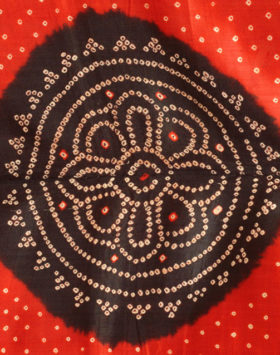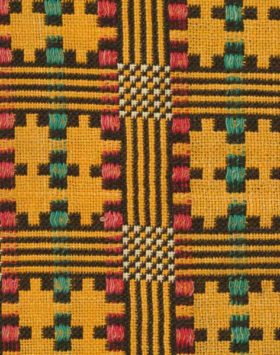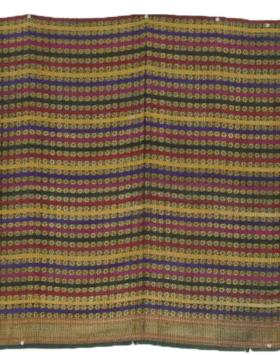Kalamkari
Illustrative textiles began as a way to tell stories about Hindu mythology, instead of relying on word of mouth. The tree of life is a common motif, and it expresses the interconnection of all life on our planet. The top of the tree reaches to the sky, and the roots connect to the earth. The tree is surrounded by vines, flowers, peacocks, tigers, and deer.
This method of block printing and hand painting has been dated back to as far as 3000 B.C., and is still practiced today. The process takes 23 steps- naturally bleaching, washing, and softening the fabric, then drawing on the black outlines, washing again, and adding color are some of them. Traditionally, they would use natural dyes, so they typically had the same color palette of rust, mustard, indigo, green, and black. There are different types of kalamkari depending on where they’re made, but this one is likely a Andhra Kalamkari from Andhra Pradesh since it includes temple influences and animal motifs. The more perfect the registry, the better the kalamkari.
This piece was made to be a wall hanging based on the design of the borders, and was made in India for the Persian market.
Circa: 19th century
Origin: Indo-Persian
Material: Cotton
Condition: Very Good
Dimensions: 87.5"x70"
Inventory number: TX4964
$4,500
SOLD
Call: (646) 370-6801
E-mail us: yosi@sarajo.com

